Creating a Color Palette for Your Home
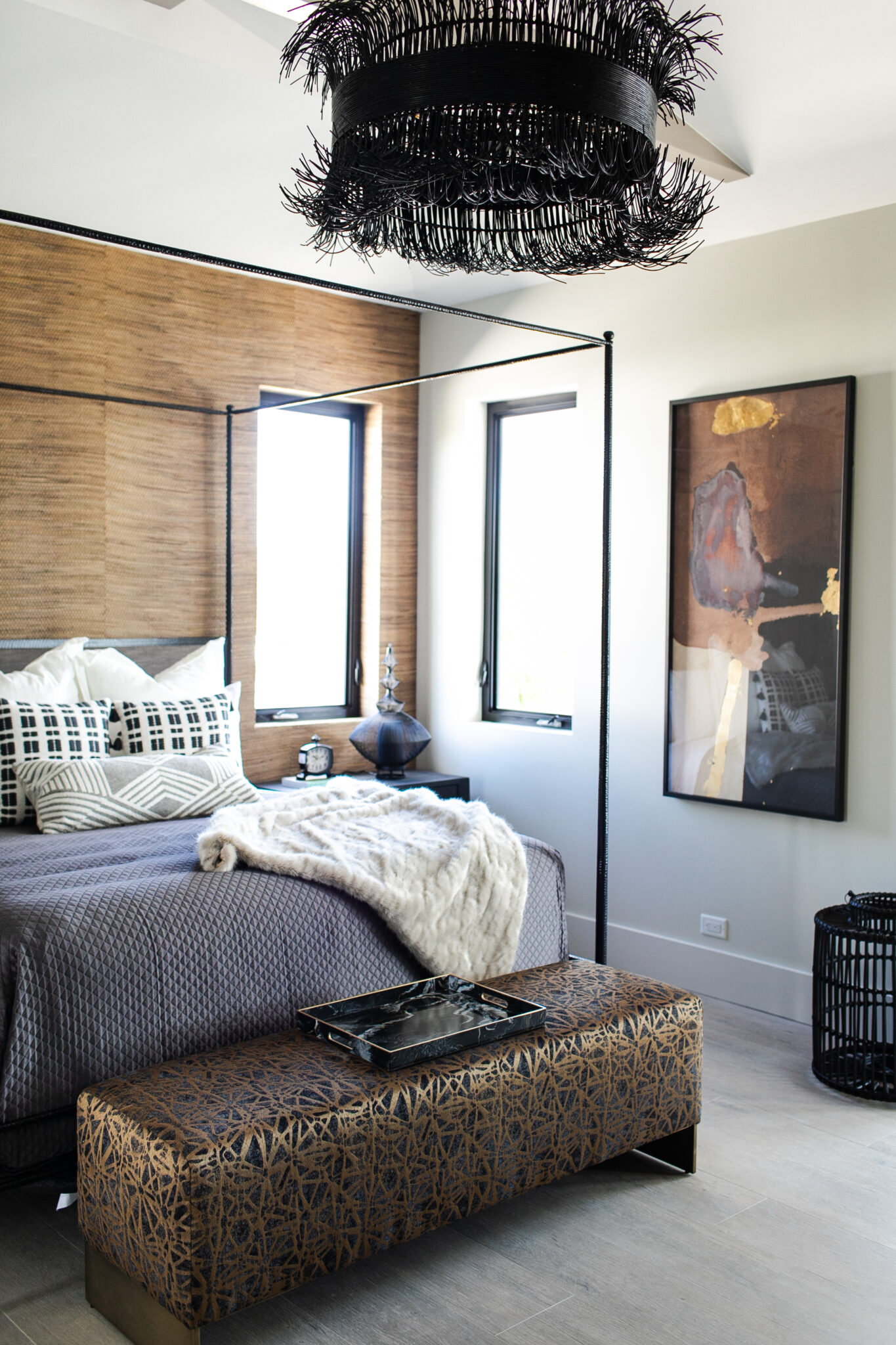
Interior Design by Krista+Home. Photographed by Eve Greendale.
Designing a home that feels balanced and inviting starts with establishing a cohesive color palette. Colors influence our emotions, set the tone for each room, and tie the entire house together.
Understand the Basics of Color Theory
Before diving into specific hues, it’s important to grasp the fundamentals of color theory. Familiarize yourself with the color wheel, which is divided into primary (red, blue, yellow), secondary (green, orange, purple), and tertiary colors. Understanding how these colors interact can help you choose complementary, analogous, or monochromatic schemes. Figure out how certain colors make you feel, and consider how you want to feel in your home.
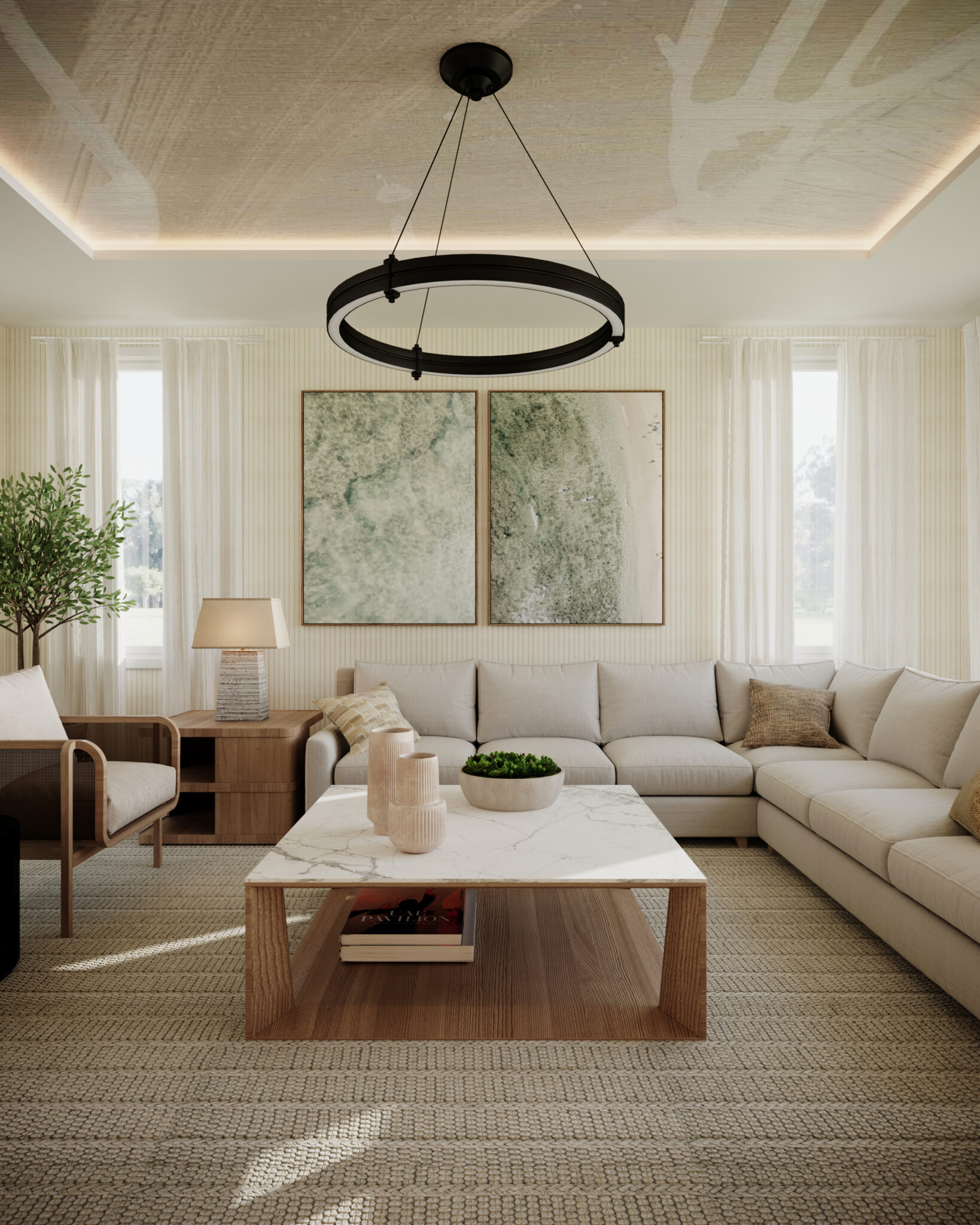
Interior Design by Krista+Home. Room available to purchase through KH ROOM SERVICE.
Start with a Base Color
Choose a base color that will serve as the foundation for your palette. This is often a neutral shade such as white, beige, gray, or a subtle pastel. Your base color will dominate larger areas like walls, ceilings, and flooring, providing a backdrop that other colors can build upon.
Select Accent Colors
Pick one or two accent colors to bring vibrancy and personality to your home. These colors should complement your base color and can be used in smaller, strategic areas like trim, accent walls, furniture, or decorative items. For instance, if your base is a cool gray, you might choose a deep blue or rich green as an accent.

Interior Design by Krista+Home. Photographed by Jessica Glynn.
Incorporate a Pop of Color
Adding a pop of color or as we like to call it “Happy Snaps of Color” can create visual interest and break the monotony. This could be a bold hue that appears in artwork, throw pillows, or an accent chair. Ensure this color harmonizes with your base and accent colors but stands out enough to make a statement.
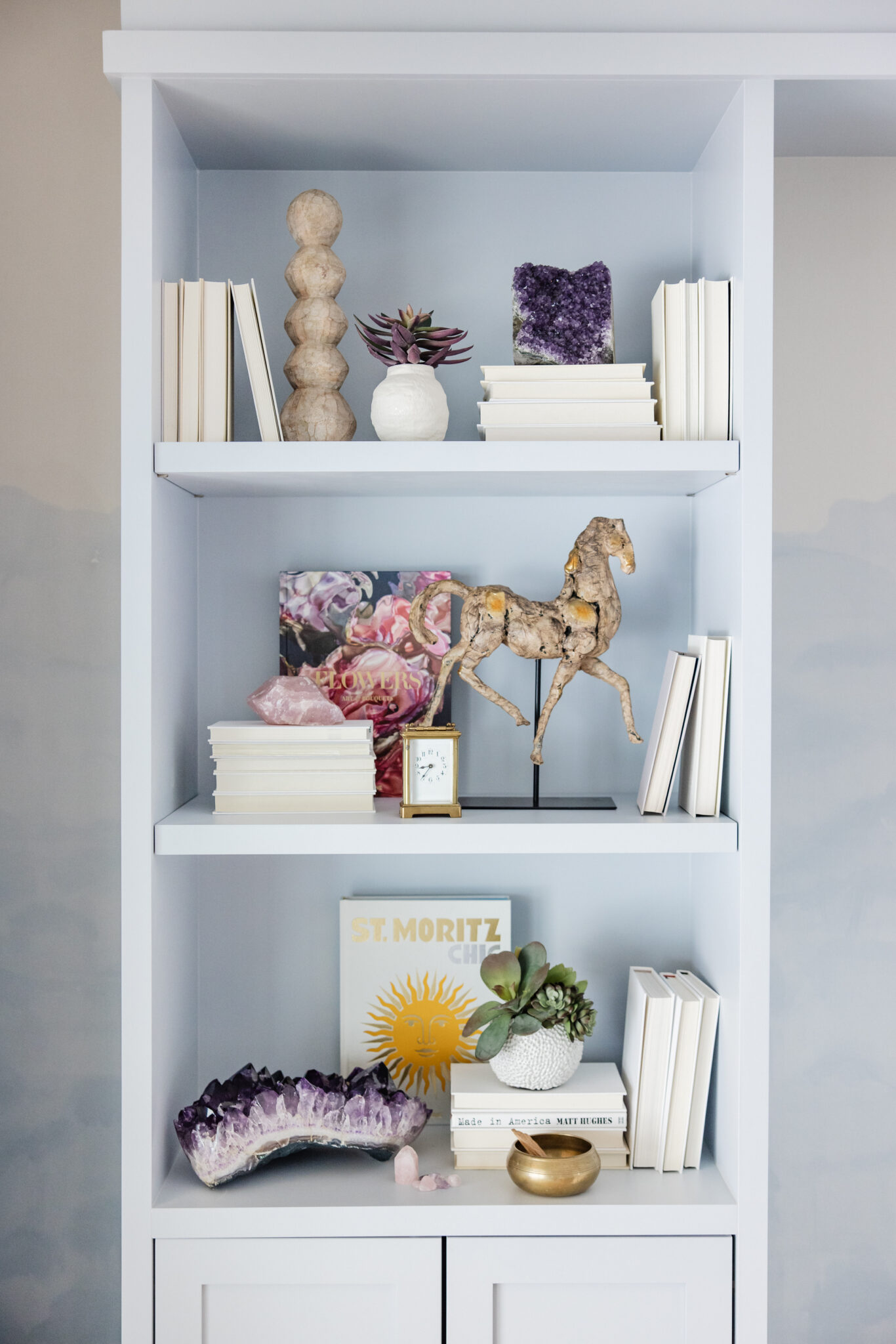
Balance Warm and Cool Tones
Mixing warm and cool tones can add depth and balance to your color scheme. Warm colors (reds, oranges, yellows) can make a space feel cozy and inviting, while cool colors (blues, greens, purples) create a calm and refreshing ambiance. Combining these can create a dynamic yet harmonious environment.
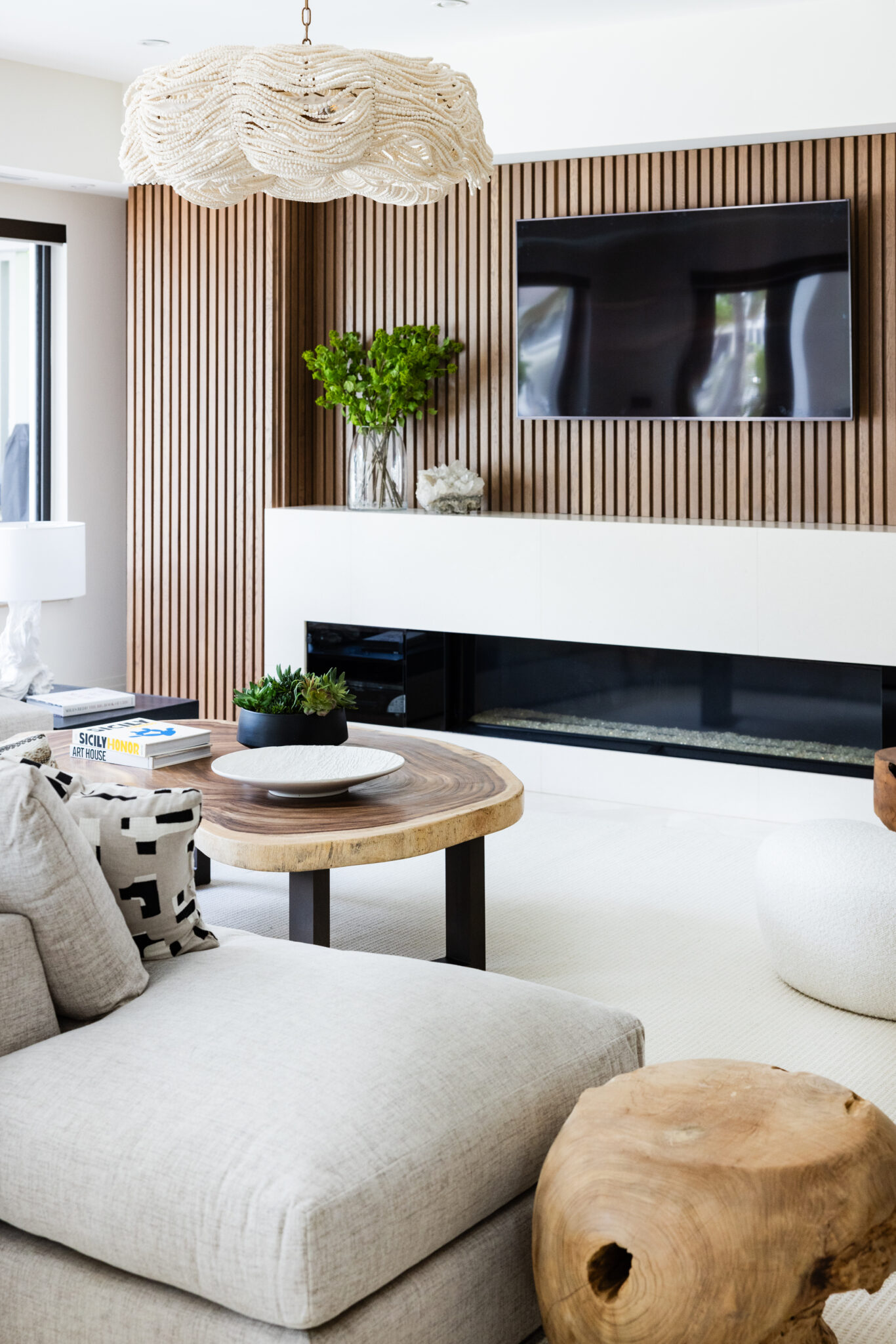
Use Patterns and Textures Wisely
Incorporate patterns and textures to add dimension and interest to your color palette. Patterns can mix multiple colors from your scheme, helping tie everything together. Textures like wood, metal, fabric, and stone can introduce subtle color variations that enhance the overall aesthetic without overwhelming the primary palette.
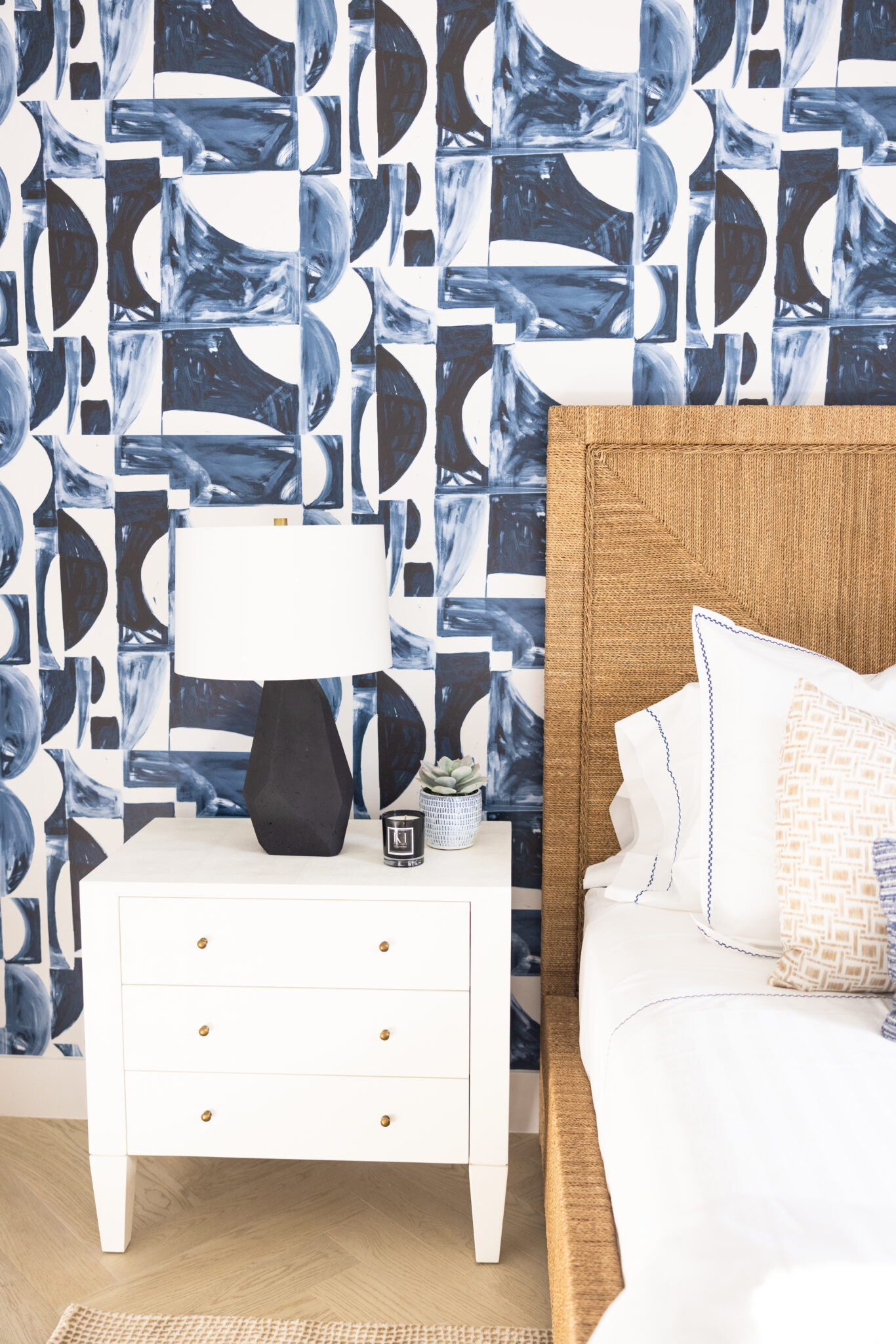
Interior Design by Krista+Home. Photographed by Eve Greendale.
Test Before You Commit
Always test your colors before fully committing. Paint swatches on your walls and observe them at different times of the day to see how they look under various lighting conditions. This step can save you from costly mistakes and ensure your chosen palette works well in your space.
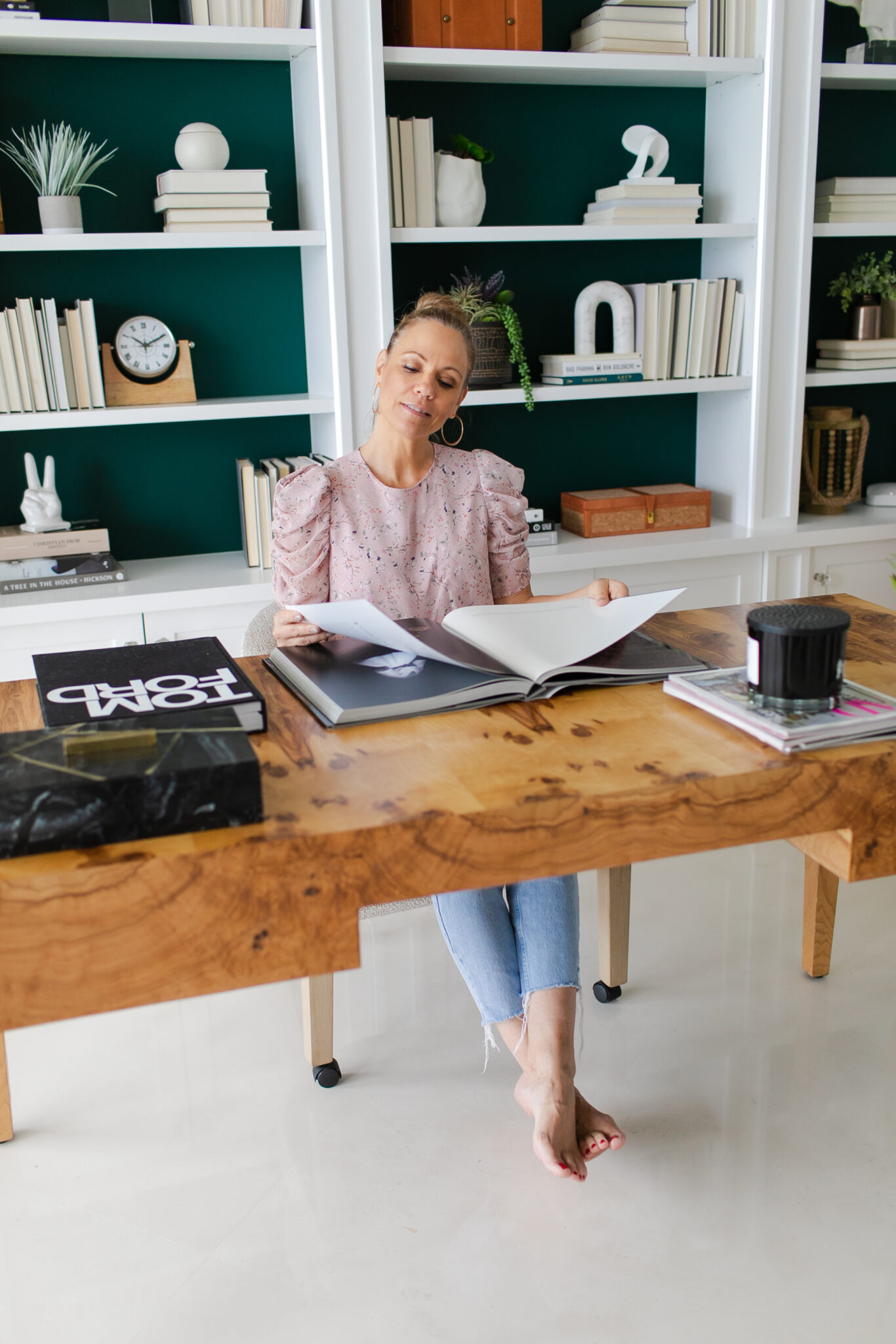
Interior Design by Krista+Home. Photographed by Eve Greendale.
Add Personal Touches
Ultimately, your color palette should reflect your personal style and taste. Incorporate colors that you love and that make you feel at home. Personal touches like family heirlooms, artwork, and other decor can be integrated into your color scheme to make your home uniquely yours.

